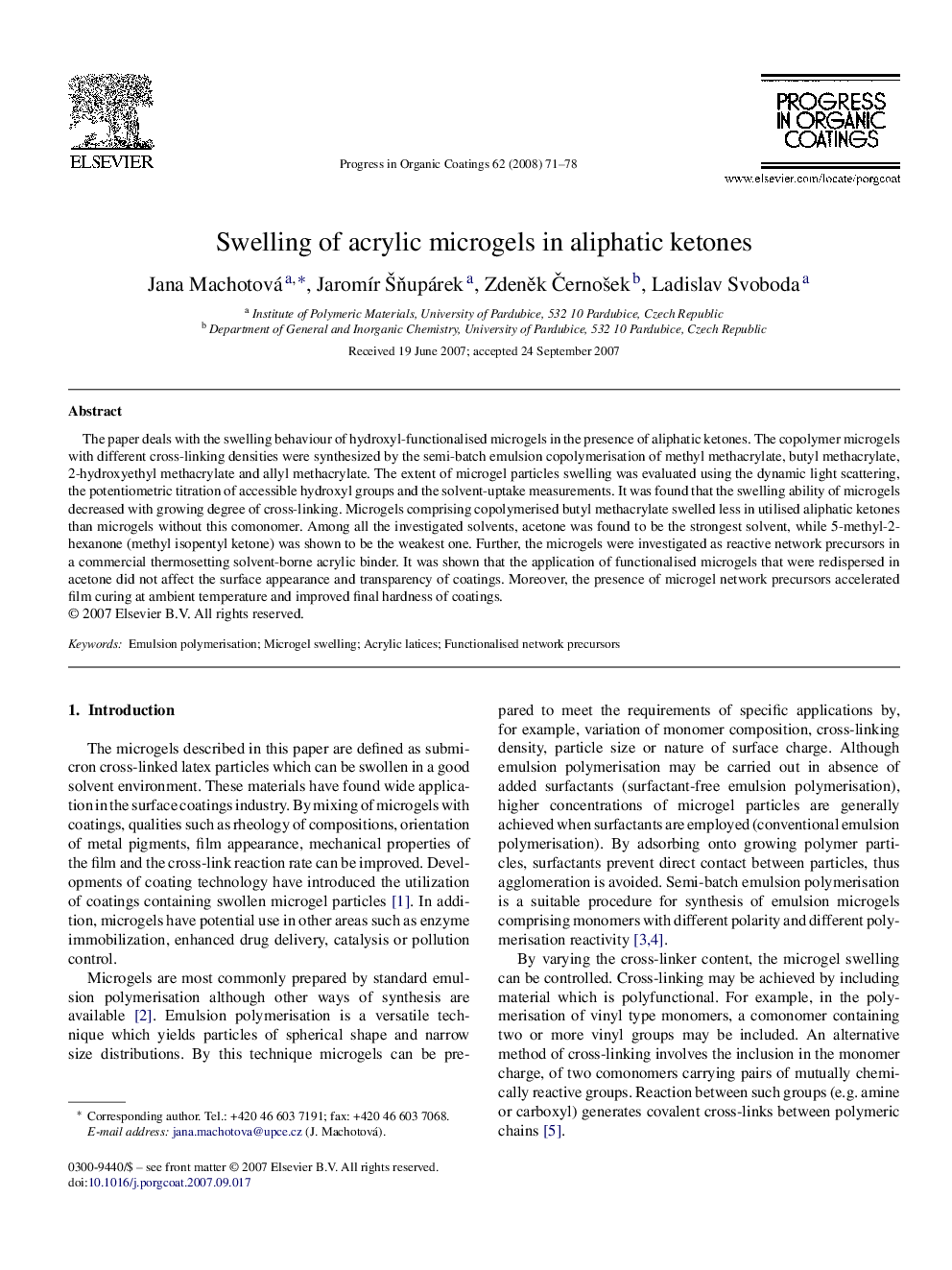| Article ID | Journal | Published Year | Pages | File Type |
|---|---|---|---|---|
| 694071 | Progress in Organic Coatings | 2008 | 8 Pages |
The paper deals with the swelling behaviour of hydroxyl-functionalised microgels in the presence of aliphatic ketones. The copolymer microgels with different cross-linking densities were synthesized by the semi-batch emulsion copolymerisation of methyl methacrylate, butyl methacrylate, 2-hydroxyethyl methacrylate and allyl methacrylate. The extent of microgel particles swelling was evaluated using the dynamic light scattering, the potentiometric titration of accessible hydroxyl groups and the solvent-uptake measurements. It was found that the swelling ability of microgels decreased with growing degree of cross-linking. Microgels comprising copolymerised butyl methacrylate swelled less in utilised aliphatic ketones than microgels without this comonomer. Among all the investigated solvents, acetone was found to be the strongest solvent, while 5-methyl-2-hexanone (methyl isopentyl ketone) was shown to be the weakest one. Further, the microgels were investigated as reactive network precursors in a commercial thermosetting solvent-borne acrylic binder. It was shown that the application of functionalised microgels that were redispersed in acetone did not affect the surface appearance and transparency of coatings. Moreover, the presence of microgel network precursors accelerated film curing at ambient temperature and improved final hardness of coatings.
